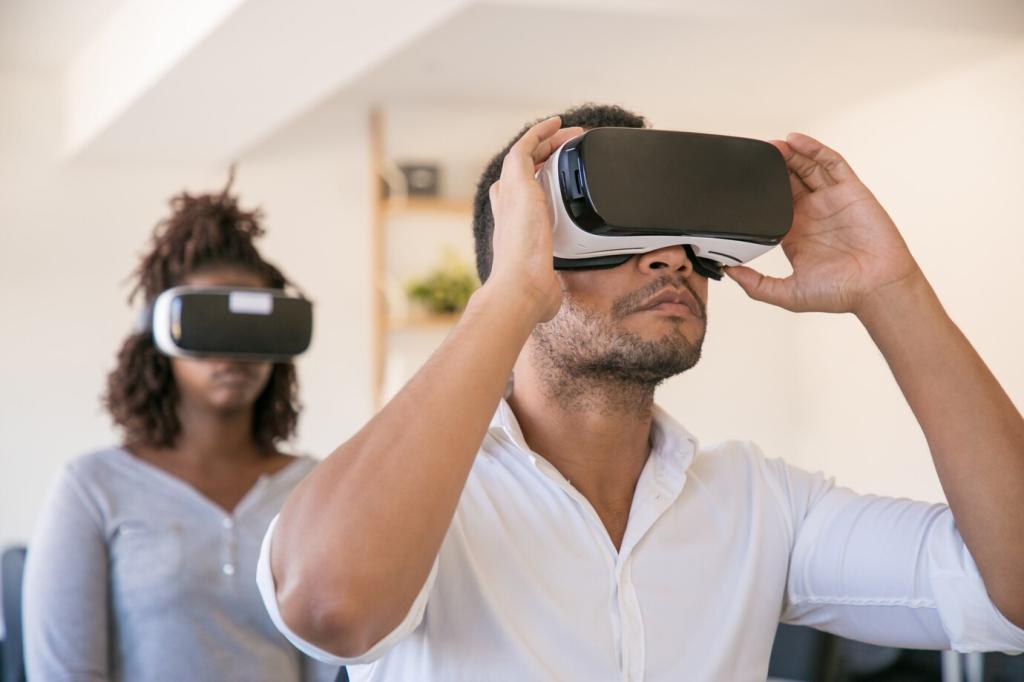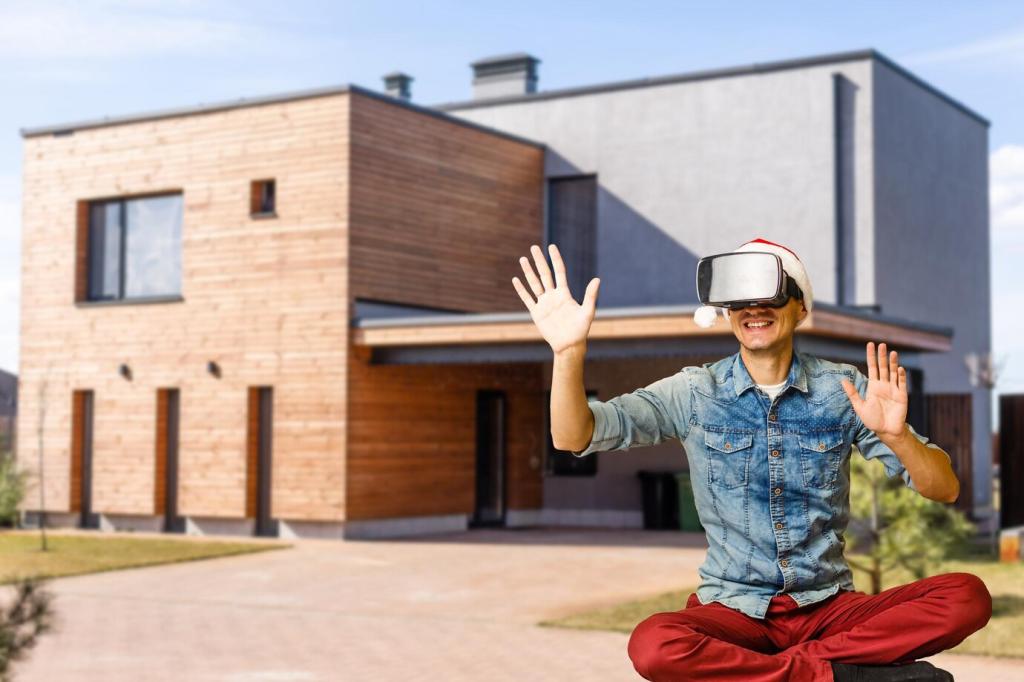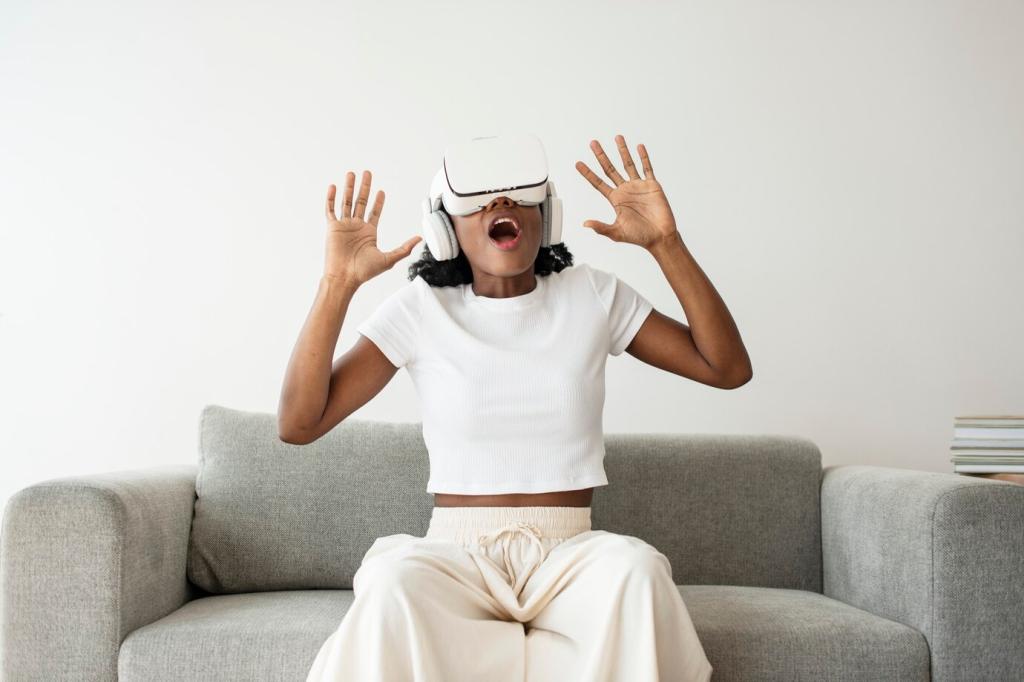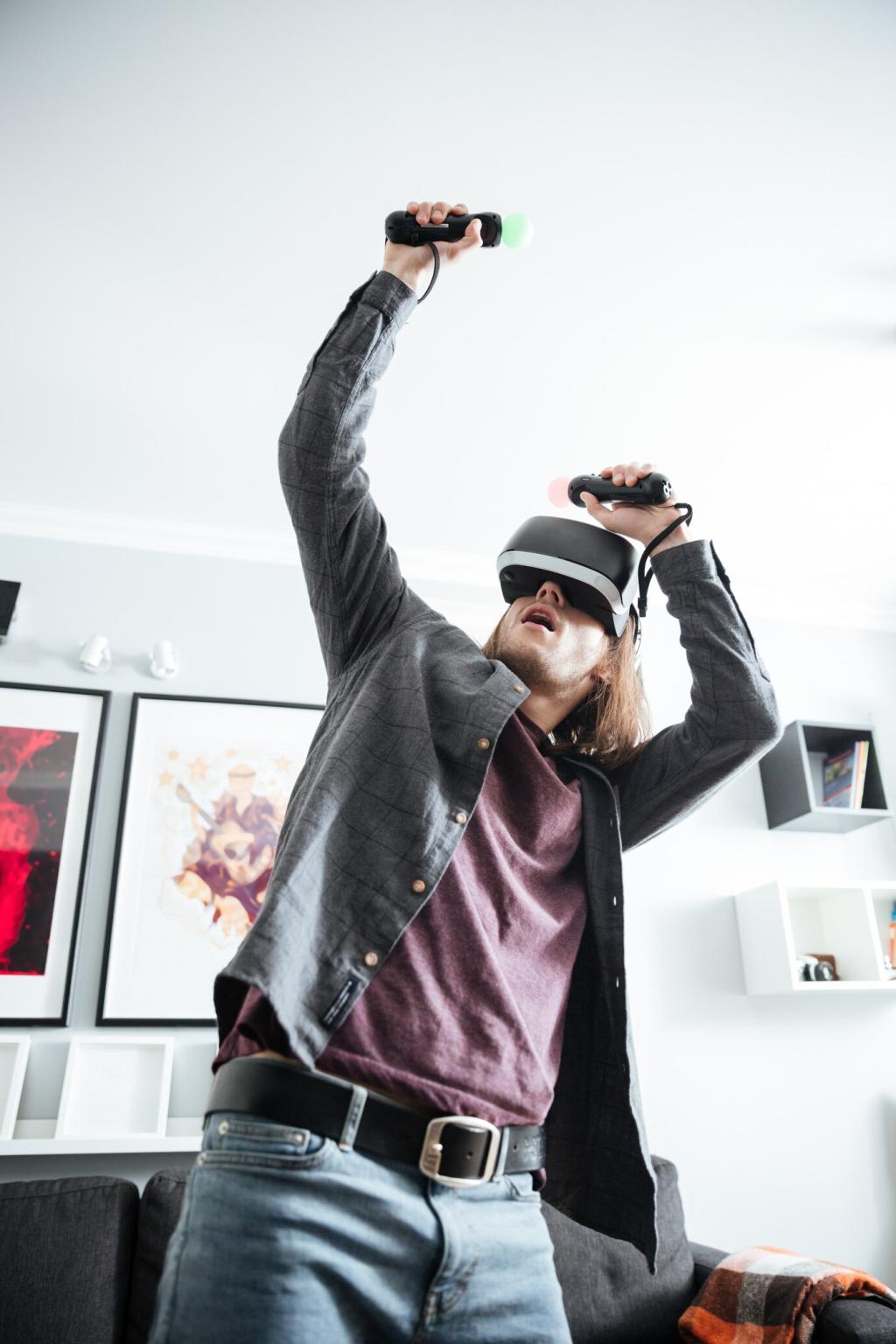
Emerging Trends in Virtual Reality for Interior Design
Virtual reality (VR) technology is fundamentally reshaping the way interior designers conceptualize, present, and refine their creative visions. As the digital world continues to evolve, immersive VR experiences enable professionals and clients alike to step inside virtual spaces, assess design elements with unprecedented realism, and make well-informed decisions. From real-time collaboration to AI-driven suggestions, VR is sparking a revolution in the interior design industry. This exploration delves into the most impactful emerging trends in VR for interior design, showcasing how these innovations are transforming workflows, enhancing client engagement, and raising the bar for creativity and practicality.
Previous slide
Next slide
Hyper-Realistic Visualization Techniques
Modern VR platforms provide highly accurate lighting simulations, factoring in variables like natural sunlight at different times of day, artificial lighting sources, and the interplay of shadows and reflections. Clients can witness how their interior will look under various lighting conditions, from morning sunlight streaming through windows to ambient moods created by lamps and fixtures. This granularity enables more informed decisions about window placements, paint colors, and fixture selections, ensuring the finished space will look just as envisioned across different scenarios.
VR-driven advancements in material and texture rendering allow surfaces in virtual spaces to appear indistinguishable from their physical counterparts. From the subtle grain of hardwood floors to the soft sheen of silk curtains, designers can showcase a vast array of finish options with uncanny realism. Clients gain confidence in their selections, able to observe how materials interact with light and with each other throughout the room. This realism addresses common apprehensions and reduces the likelihood of dissatisfaction after installation, streamlining the approval process and enhancing client peace of mind.
The future of VR in interior design includes immersive, multi-sensory environments that go beyond visual accuracy. Innovations now integrate spatial audio, haptic feedback, and even scent simulations to evoke a complete sensory impression of the space. For instance, spatial audio allows users to hear how sound travels within a room based on layout and materials, helping with acoustic planning. Haptic devices deliver physical feedback for different surface textures or furniture ergonomics. These enhancements deepen immersion and provide unparalleled insight into how a space will look, feel, and sound.
Previous slide
Next slide

Virtual Staging and Mock-Ups for Real Estate
By leveraging VR staging, real estate professionals and designers craft highly appealing, photorealistic interiors instantly viewable through VR headsets or interactive apps. These immersive tours resonate with prospective buyers, giving them a true sense of scale, flow, and potential. Unlike traditional brochures or 2D renderings, VR empowers buyers to explore different furnishing options, color schemes, and layouts, helping them emotionally connect with the space and envision their lives within it.

Previous slide
Next slide
VR-Based Sustainability Analysis and Green Design
Real-Time Energy Modelling
VR allows designers and clients to simulate the energy performance of a space, tweaking window sizes, insulation, and appliance choices to gauge their impact on heating, cooling, and lighting loads. This real-time modelling guides decisions that can lead to significant long-term savings and reduced environmental impact. Clients are empowered with tangible data and visual cues illustrating how minor design changes translate into sustainable outcomes.
Virtual Material Sourcing and Certification
Designers can explore, compare, and source eco-friendly building materials within VR platforms, previewing how each option looks and performs in the context of the entire room. Integrated certification data helps ensure selected products meet leading sustainability standards. Clients become informed about their material choices, favoring those with lower embodied energy, recycled content, or ethical sourcing. The transparency and convenience encourage adoption of greener alternatives without sacrificing aesthetics.
Life Cycle Impact Visualization
VR-based life cycle assessment tools graphically display the environmental costs associated with each design element, from manufacturing through use to disposal. By modeling scenarios such as material reuse, renovation frequency, and recycling options, designers address sustainability at every phase. Clients gain a holistic understanding of the ecological consequences of each decision, empowering them to prioritize longevity and minimal waste in their finished interiors.
Customizable Virtual Showrooms and Product Libraries
Dynamic, Real-Time Product Updates
Brands can now update their virtual catalogs in real time, ensuring designers and clients always have access to the newest offerings, colorways, and seasonal trends. Clients can instantly swap between variants and visualize how new arrivals enhance their spaces. This interconnected ecosystem keeps projects on the cutting edge of style and frees clients from the frustration of outdated choices or supply gaps.


In-depth Product Customization
Virtual showrooms empower users to test drive extensive customization options, from tweaking the finishes of cabinetry to experimenting with modular furniture configurations. Clients receive an immersive preview of made-to-order items, allowing them to verify fit and style before committing. This co-creative process reduces order errors, enhances brand loyalty, and adds value by placing the customer at the center of the design journey.
Democratizing Access to High-End Design
Affordable, On-Demand Consultations
VR-enabled services lower the barriers to professional interior design by offering remote consultations at accessible price points. Users can connect with experienced designers for advice, mockups, or space planning directly inside the virtual model, often in real time. This flexibility broadens the client pool to encompass those previously underserved by the cost or logistics of traditional design services, making high-quality guidance a viable option for all.
Design Education and DIY Empowerment
Interactive VR environments allow aspiring designers and everyday users to experiment with layouts, materials, and styles, learning directly through immersive trial and error. Intuitive tools and educational modules nurture design confidence, enabling individuals to make better decisions about their spaces. By placing advanced technology in the hands of non-experts, VR is cultivating a culture of design curiosity, ingenuity, and self-expression.
Enhanced Accessibility Features
VR platforms are increasingly prioritizing universal design and accessibility, integrating features like voice controls, subtitles, haptic cues, and adjustable navigation for users with disabilities. This commitment ensures that the benefits of VR interior design reach the broadest possible audience. Enhanced accessibility promotes equity, fosters inclusion, and sets a benchmark for how technology can serve the diverse needs of every individual.
